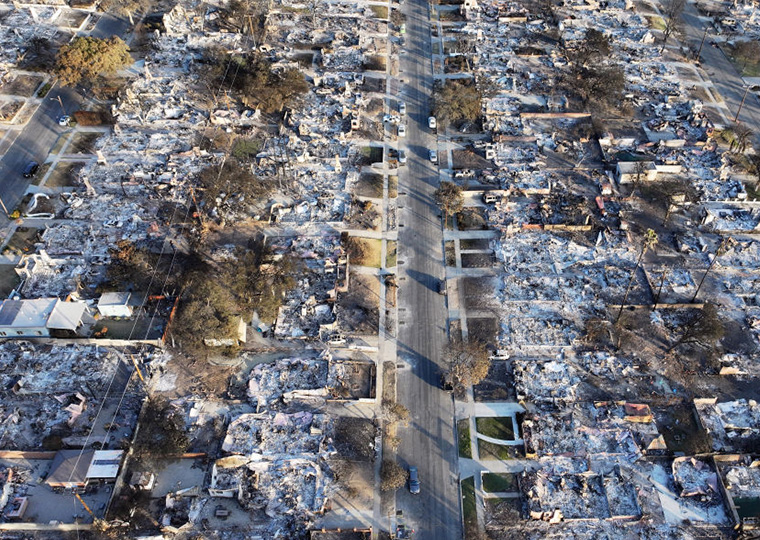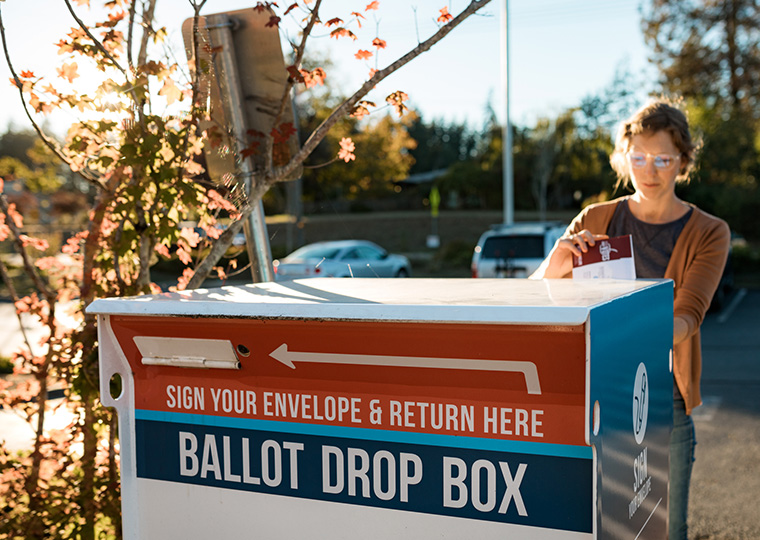What emerges is a fragmented view of corporate contribution to global warming
With an estimated total market size of $8 trillion, sustainable investing is far from being canceled in the United States, though it has recently lost some sheen. The $324 billion invested in U.S. sustainable mutual funds and exchange traded funds at year-end 2023 speaks to the strategy’s popularity, yet last year marked the first time funds focused on environmental, social and governance experienced net outflows, according to Morningstar.
Market lagging performance is part of the story, as is the fact that the strategy has become an object of derision among a segment of Republican politicians. Yet even among those who believe that investing can and should be aligned with best (better) practices, there are concerns.
Exhibit A is the Wild West approach to corporate climate-related cost and risk disclosure. The funds and ETFs having been thrown together quite quickly, it’s safe to say they include some companies with demonstrably poor records on E, S and/or G, and that can be a turnoff to investors trying to screen out such actors. Tesla, having single-handedly launched the EV movement, would seem a clear ESG stock, but some investors find its treatment of workers troubling, for instance.
More broadly, up to now environmental disclosure has been mostly voluntary, and even then suffers from a confounding lack of standardization in how data is collected, computed and reported by companies and by the army of third-party consultants they hire to generate the reports.
The Securities and Exchange Commission recently stepped in with new climate-related reporting rules to address more standardized disclosure. After a record deluge of public comments, the SEC’s final rule has a two-steps-forward-and-one-step-back vibe. Anticipating court challenges — which, in fact, materialized within hours of the final rule being released — the SEC scaled back the scope of its original proposal floated in 2022, dropping so-called Scope 3 reporting requirements.
Pending the outcome of legal challenges, the new SEC rules will kick in for 2025 fiscal year reporting, but only for very large firms. The core requirements will be to report basic greenhouse gas emissions and to disclose climate-related risks that have had or might have a material impact on business strategy, operations and finances. But in dropping Scope 3, the SEC walked away from requiring disclosure of a metric considered the most consequential in terms of gauging a firm’s current environmental footprint.
In baseball terms, not a home run, but federal regulators are at least in the game.
The Scope of the Disclosure Problem
Analysis by the Open for Good Initiative, launched in 2023 within UCLA Anderson’s Center for Impact, provides detailed context on the uneven and incomplete reporting of corporate environmental impacts among firms in the S&P 500 index.
In its most recent “State of Corporate Sustainability Disclosure” report, the initiative finds that across 16 metrics spanning not just E, but also S and G, the average overall disclosure rate is just 55%. Environmental disclosure is the most opaque, with an average disclosure of 52%. If enacted, the SEC’s final climate-change reporting rules will likely fuel at best an incremental improvement in climate-related disclosure.
To assess environmental disclosure, UCLA Anderson’s Magali Delmas, director of the Center for Impact, along with Ph.D. candidates Kelly Clark, Jiaxin Li and Tyson Timmer, leverage the framework of the Greenhouse Gas Protocol, a globally recognized system that categorizes greenhouse gas emissions into three sleeves:
- Scope 1: Direct emissions from operations a company owns and controls.
- Scope 2: Emissions caused by energy a business buys to fuel operations.
- Scope 3: Indirect emissions up and down the value chain beyond Scope 1 and 2.
The SEC’s final rule requires disclosure of Scope 1 and Scope 2 data, but the regulator dropped its initial proposal to also require Scope 3 reporting. And that is where reporting is currently weakest, according to Open for Good’s database of S&P 500 firms.
Scouring public data from 2022 corporate regulatory filings, Delmas and her team assign a rating of 1.0 for full disclosure, 0.5 for partial disclosure and 0.0 for no disclosure. They then computed average disclosure rates for the three levels, across S&P 500 firms:
Given that the respected Greenhouse Gas Protocol organization estimates that Scope 3 accounts for about 70% of emissions for many businesses, the exclusion of Scope 3 suggests investors will still be lacking a key metric to assess climate exposure. Pushback from stakeholders on the cost of compiling Scope 3 data and the lack of consistent and reliable third-party data sources were leading reasons for why it was dropped from the SEC’s final rule.
It is also well documented that among the easiest ways to burnish a company’s Scope 1 and 2 record is to push emissions onto suppliers or other third parties, making them Scope 3 (and not required for disclosure) emissions.
Still, sector-level data from the Open for Good Initiative suggests there is a solid base of Scope 3 disclosure already being done, which can potentially be built upon.
The SEC’s final rule that addresses disclosure of risks and mitigation strategies being used to address those risks follows the structure of global-accepted standards laid out by the Task Force on Climate-Related Financial Disclosures. On this front, current compliance is a mixed bag. Open for Good finds about half of the S&P 500 makes disclosures in line with TCFD guidelines, with a wide variance among sectors.
“Even if the disclosure rates for Scope 1 and 2 seem high, the way the information is communicated is not standardized so it is difficult to compare,” Delmas says in an email exchange.
As for Scope 3, even when it’s reported, Delmas notes, “Scope 3 includes about 15 different categories and most often we don’t know which one is reported.”
And as the Open for Good’s annual report points out, the qualitative nature of TCFD disclosures leaves open the door that some businesses may be using it as a form of deceptive “greenwashing” that makes their climate efforts appear more robust than they are. Still, there’s progress. Delmas and her colleagues note that the combination of GHG emissions disclosure and the qualitative TCFD disclosures could combine, had Scope 3 emissions disclosures been required, to produce a “well-rounded picture of a company’s efforts to tackle climate change.”
Enter California
While the SEC backed off Scope 3 due to well-founded concerns about federal judicial roadblocks, Scope 3 disclosure was included in California legislation that passed in late 2023. Companies with annual revenue of more than $1 billion would be required to report Scope 1 and Scope 2 GHG emissions beginning in 2026; similar disclosure for Scope 3 is slated for 2027. A companion bill would also require firms with annual revenue of at least $500 million to also disclose their climate-related financial risks and what they are doing to manage those risks. Lawsuits contesting both bills are pending.
Now, however, there are signs that some California officials would be happy to exclude Scope 3 emissions. That would undermine the notion of California, as it has long done on environmental issues, leading the way on climate disclosure.
The Open for Good annual report notes that current disclosure standards by S&P 500 companies “fall far short” of the new SEC and California requirements. That suggests firms will likely need to invest in some mix of “upskilling” existing employees to do the work, hiring new workers or outsourcing the process to consultants on a fairly short timeline.
That said, the cost of compliance is not likely a meaningful drag on companies with at least $1 billion of annual revenue. A 2022 survey conducted by the ERM SustainAbility Institute put the current average annual cost of climate disclosure that tracks with the new regs at $533,000.
And the payoff to the investor class seems clear given the inescapability of climate change’s negative impact on the U.S. economy. The federal government is on the record that we’re now experiencing climate-related events that cause at least a billion dollars in damage every three weeks. Between 2017 and 2023, 137 disasters caused a total of more than $1 trillion in damage. With that backdrop, it doesn’t seem a stretch to suggest that corporate disclosure of climate-related risks deserves to be a standardized disclosure requirement.
Featured Faculty
-
Magali Delmas
Professor of Management; Faculty Director, Impact@Anderson
-
Kelly Clark
Institute of the Environment and Sustainability, Ph.D. candidate
-
Jiaxin Li
Strategy, Ph.D. candidate
-
Tyson Timmer
Institute of the Environment and Sustainability, Ph. D. candidate
About the Research
Delmas, M., Clark, K., Li, J., & Timmer, T. (2024). The State of Corporate Sustainability Disclosure 2023. Available at SSRN 4729321.






